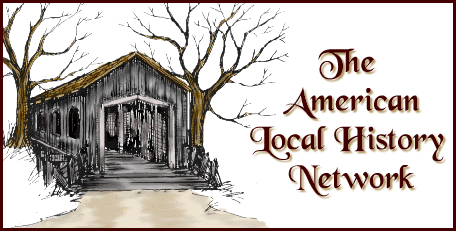History
of
Burke County,
North Carolina
![]()
Burke County's roots go back to the days of the earliest settlers in the Catawba Valley Basin. Prior to the middle of the eighteenth century, the region now known as Burke County was a wilderness serving as a hunting ground for the Catawba and Cherokee Indians. In 1750, the Great Southern Migration of Scotch-Irish and German settlers began as a steady stream came from Pennsylvania, Maryland and Virginia. The migration was temporarily halted by the French and Indian War, but resumed until the eve of the American Revolution, which required great sacrifices from the citizens.
The population continued to increase, and in November 1776, the fifth and final Provincial Congress of North Carolina convened and adopted a North Carolina State Constitution. In conformity with the new constitution, the first General Assembly convened in 1777. An act was passed, and on June 1, 1777, Burke County was formed, dividing Rowan County, named in honor of Dr. Thomas Burke, then a representative in the Continental Congress and later to be the third governor of the state (1781-1782).
Burke County soldiers played a notable role in fighting the advances of Cornwallis, and in great American victories at Kings Mountain and Cowpens in 1780 and 1781. In Cowpens, their leader was General Daniel Morgan, for whom their new county seat was later named.
Following the war, some of Burke County's most prominent citizens began to settle here, including the first Attorney General of North Carolina and a signer of the Mecklenburg Declaration of Independence, Waightstill Avery.
In the early 1800's, gold was discovered in the state, and soon North Carolina became the leading gold state of the Union. In the late 1820's, large deposits were discovered in the Brindletown area of Burke County and a gold rush began.
Burke County's first courthouse was built of logs in 1785 about eight years after the county was formed. A second and more substantial building was constructed in 1791 and served as the county Courthouse until 1833 when a two-story building was authorized by the General Assembly. In 1832, the famous trial of Frankie Silver took place in the second courthouse. Frankie Silver had murdered her husband with an ax and became the first white woman to be executed by hanging in North Carolina.
In 1834, Burke County was reduced to 511 square miles. During the last year of the Civil War, Federal raiders under General George Stoneman allegedly threw many court records out on the courthouse square and burned them. In 1901, a complete remodeling was done. Until vacated for the new courthouse in 1976, the Old Burke County Courthouse was the oldest public structure still being used for its originally designated purpose in western North Carolina.
In 1893, one of the last major migrations of European settlers occurred with the arrival of the Waldenses from Italy. They obtained ten thousand acres of land from the Morganton Land Company and named their town Valdese.
Industrial expansion came to the county at the turn of the century. Tanneries, furniture and textile factories formed a nucleus of industry in western North Carolina. In 1893 a large fire in Morganton struck Burke County. Then in 1916, immense flooding of the Catawba River wiped out virtually all the bridges, along with damage to millions of dollars of property.
![]()


